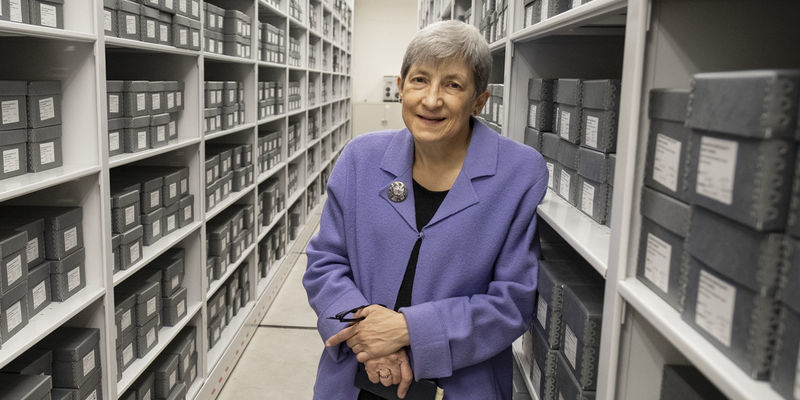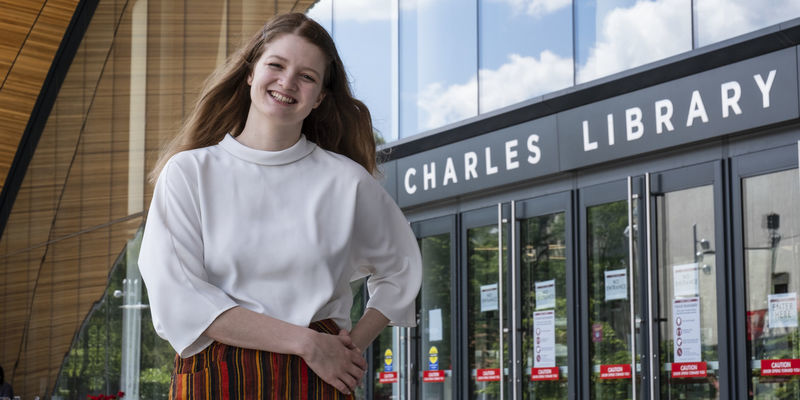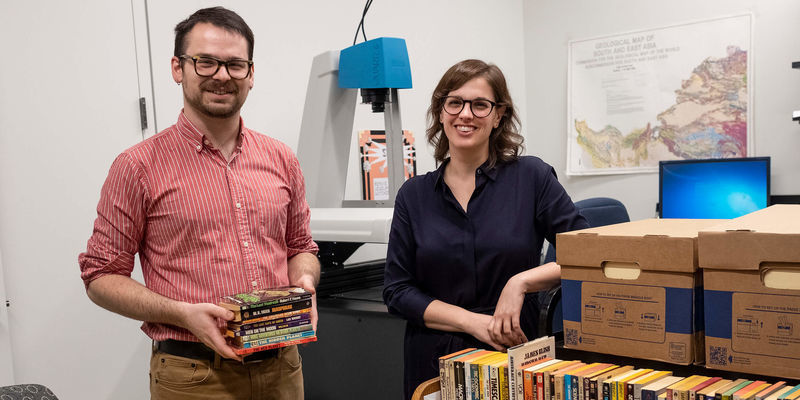Library exhibit highlights staff picks from various collections
Pieces from collections in the Special Collections Research Center are displayed in the Charles Library’s latest exhibit.
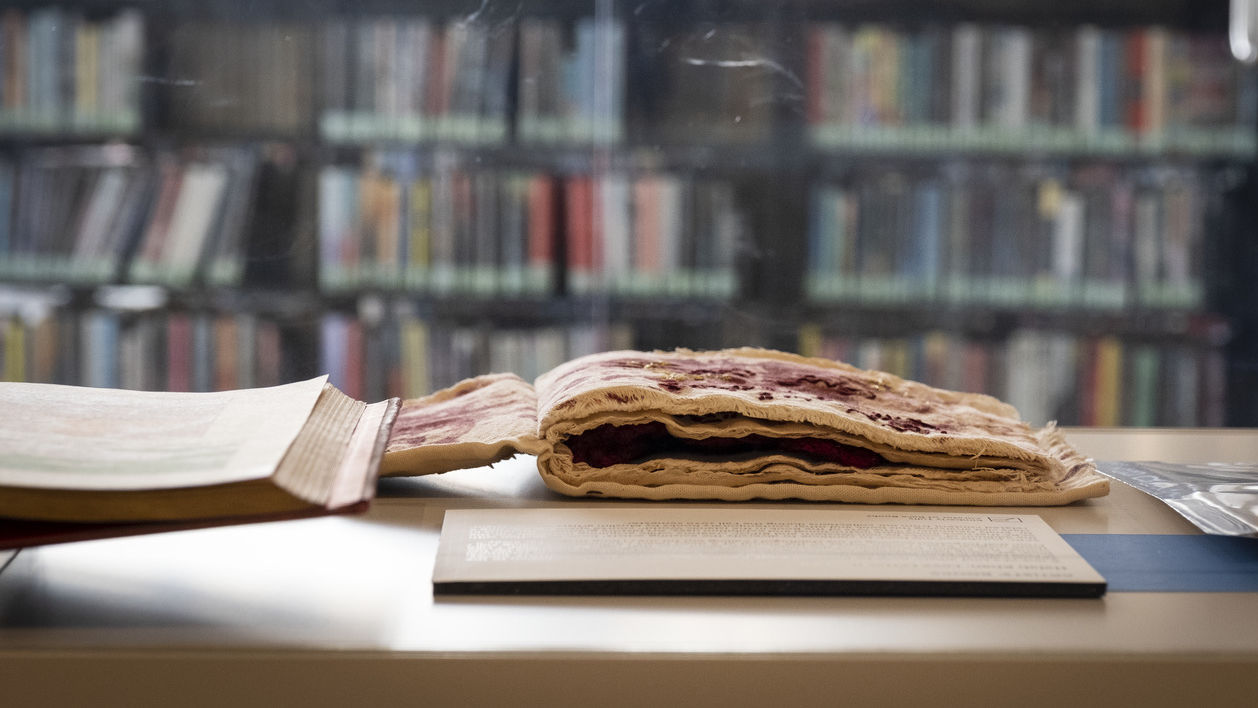
Charles Library’s Special Collections Research Center (SCRC) prides itself on the research value of its vast archives. This claim to fame has inspired its latest exhibit—What’s Great, New, Next?—in which SCRC staff members chose items from the center’s various collections. Rather than telling a story, the exhibit teases the SCRC’s offerings.
“[The exhibit] represents the range of topics that our special collections and archives include and the ways these collections intersect with the variety of the curricula at the schools and colleges as well as the value for original research that Temple’s collections offer to students and the community,” said Margery Sly, director of special collections. “We want to connect these materials with researchers.”
Staff members selected material to showcase based mostly on what they were working on—for research, teaching, cataloging or processing—as well as what interested them.
“My previous academic studies have centered around both Irish history and literature and the history of the book, so the products of the Cuala Press have always fascinated me, especially because the press was run and operated by women,” said Kimberly Tully, curator of rare books, of the Irish broadsides printed in Dublin in the early 1900s that she picked for the exhibition. “These broadsides are often used in SCRC instruction sessions with students studying the history of the arts and crafts private press movement, the history of the illustrated book, and the history and literature of Ireland.”
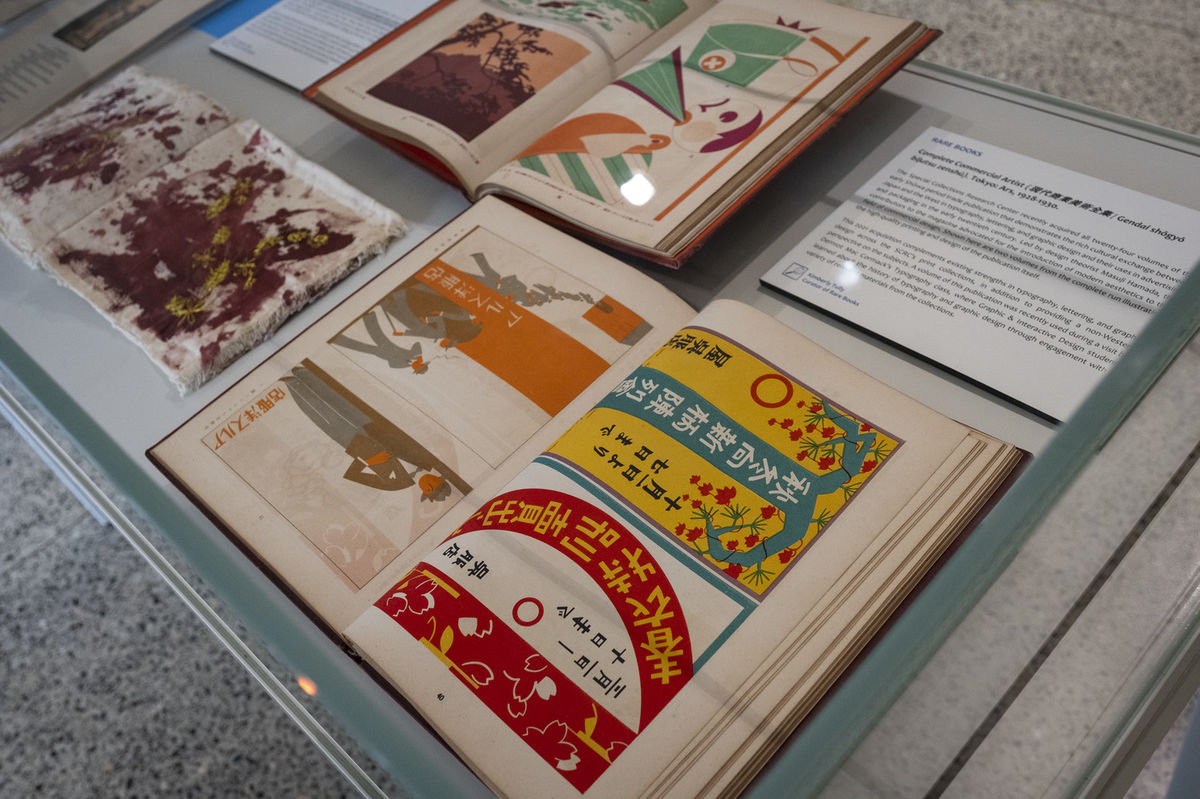 “I focused on visually appealing materials with a bright color palette and unique or unusual materiality,” said Kimberly Tully, curator of rare books. (Photography by Joseph V. Labolito)
“I focused on visually appealing materials with a bright color palette and unique or unusual materiality,” said Kimberly Tully, curator of rare books. (Photography by Joseph V. Labolito)
Coordinator of technical services Katy Rawdon, who has been cataloging items in the Harry C. Cochran History of Business Collection, wants the manuscript she chose about Great Britain trade conditions with the West Indies to find broader use.
“I’m cataloging documents like this one both as records of European financial practices and as colonialist policy, with the hope that researchers will find and use them to interrogate those policies in their work,” said Rawdon.
Meanwhile, processing archivist Holly Wilson wanted to highlight articles from the Red Tide, an underground newspaper at University High School in West Los Angeles, part of the Youth Liberation Press Records. “It’s a great collection that talks about current events. There are very similar issues and problems that today’s 16-year-olds are still facing.”
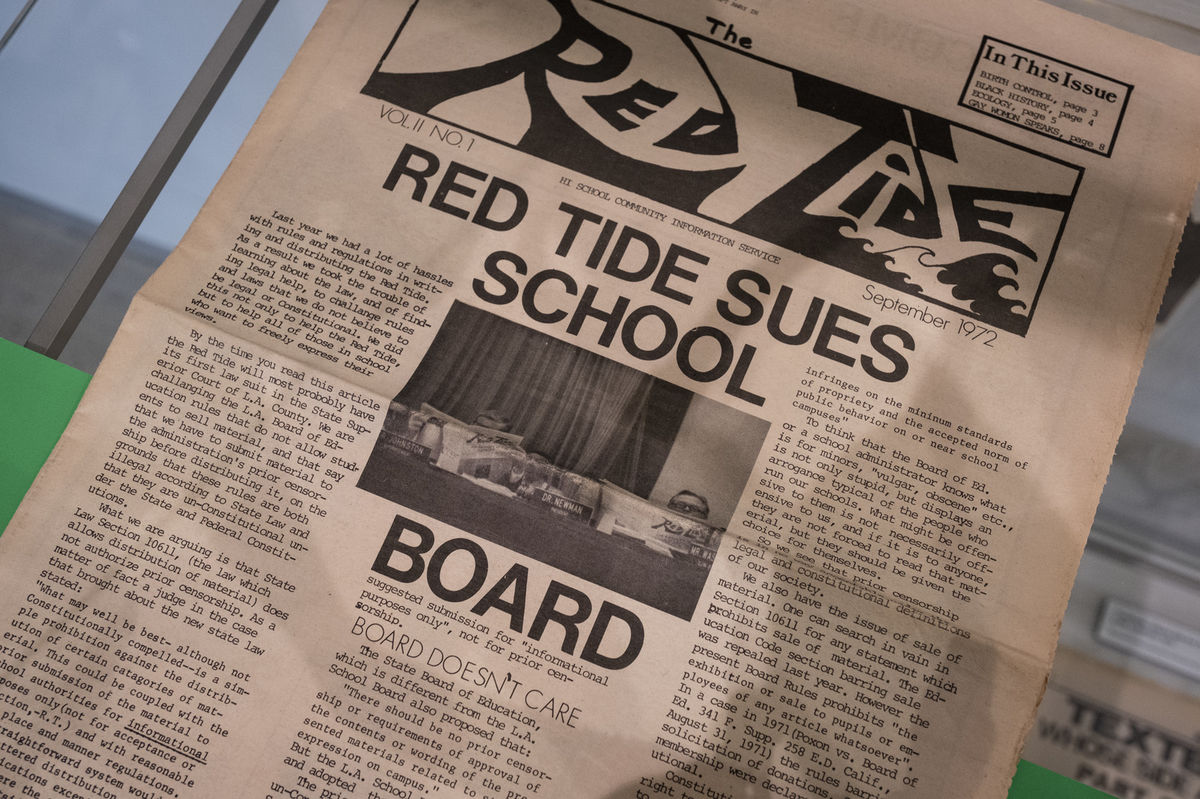 A case about the Red Tide went to the Supreme Court after students had been told they weren’t allowed to distribute the newspaper. The Supreme Court ruled in their favor. “These students set a precedent for the rest of the high school underground newspapers,” said Holly Wilson, processing archivist. (Photography by Joseph V. Labolito)
A case about the Red Tide went to the Supreme Court after students had been told they weren’t allowed to distribute the newspaper. The Supreme Court ruled in their favor. “These students set a precedent for the rest of the high school underground newspapers,” said Holly Wilson, processing archivist. (Photography by Joseph V. Labolito)
The travel pamphlets chosen by Josué Hurtado, coordinator of public services and outreach, are meant to interest students and scholars of public history and anyone interested in how historical memory is created and shaped in the popular imagination. “They show what people remember from visits and how historical sites represent themselves and how that might change over time,” said Hurtado.
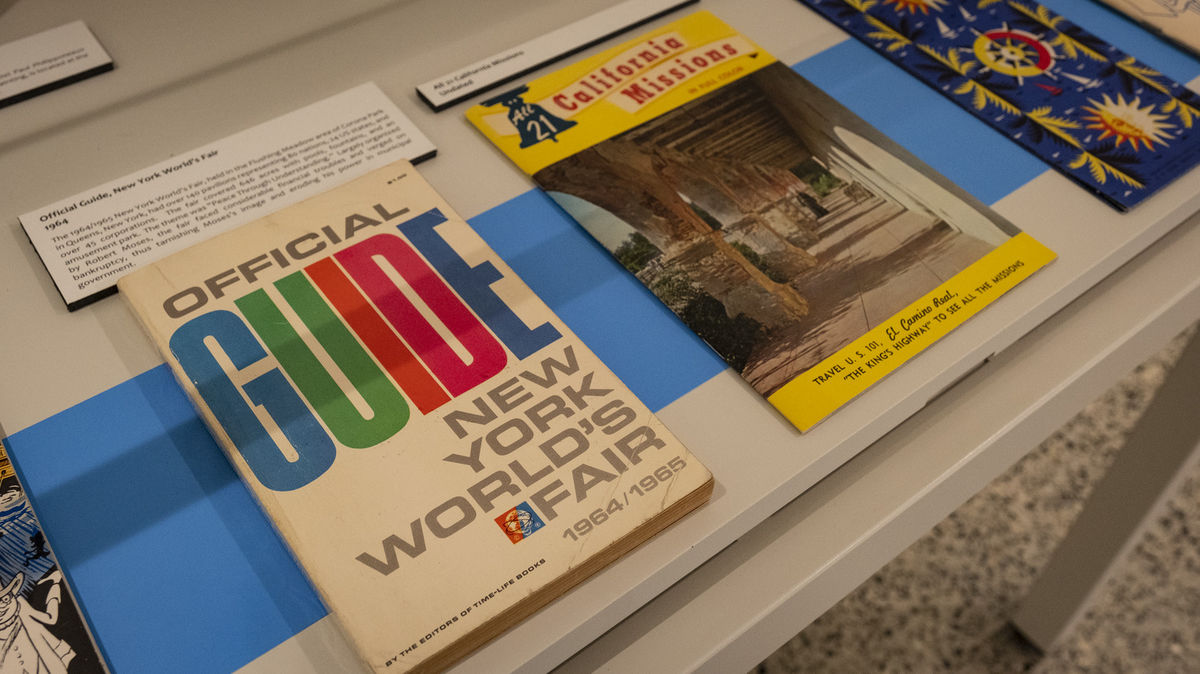 “These travel pamphlets from around the world are designed to catch your eye,” said Josué Hurtado, coordinator of public services and outreach. “They’re visually interesting and interesting from a historical perspective because they provide insight into how public history and memories are made.” (Photography by Joseph V. Labolito)
“These travel pamphlets from around the world are designed to catch your eye,” said Josué Hurtado, coordinator of public services and outreach. “They’re visually interesting and interesting from a historical perspective because they provide insight into how public history and memories are made.” (Photography by Joseph V. Labolito)
Additionally, part of the SCRC’s mission is to feature diverse, underrepresented groups.
“We’re trying to go beyond the West to non-Western cultures and connect more with our increasingly diverse student body to have material that intersects with their frame of reference,” said Sly.
Some of the diverse materials in the exhibit include a manuscript copy of a popular collection of prayers and devotions to the Prophet Muhammad, two volumes of an early 20th century Japanese graphic arts magazine, and a contemporary artists’ book by emerging Pakistani artist Halah Khan that is completely handmade using fabric and thread.
Along with these international items, Temple’s Philadelphia roots are displayed. A notable example is the material about Tastykake—a Philadelphia delicacy.
“The Tastykake cakes and pies are a Philadelphia tradition along with the Philly cheesesteak, pretzel and hoagie,” said associate archivist Brenda Galloway-Wright. “The collection is currently being processed and once completed will serve as a primary resource for those researchers interested in business and advertising history in Philadelphia, as well as the history of the [Tasty Baking] Company itself.”
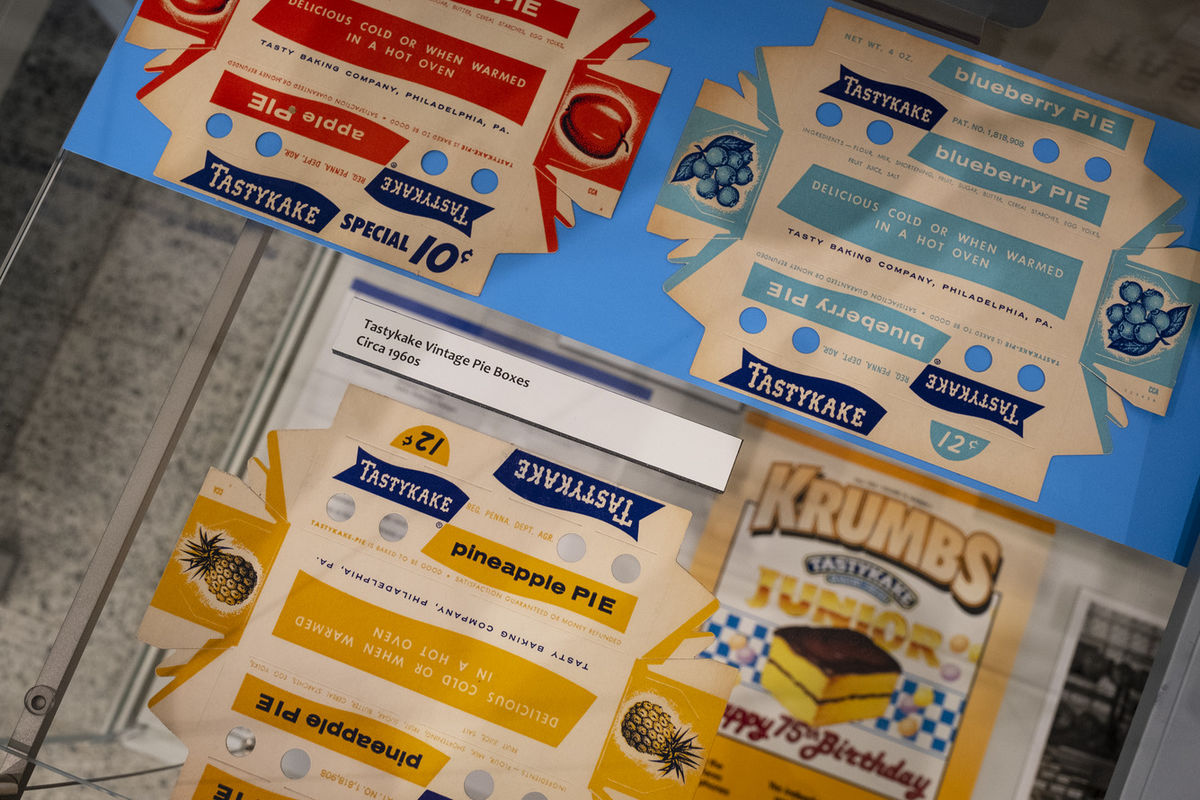 Tasty Baking Company began in 1914 and has served generations of Philadelphians. “From its inception, the company sold individually wrapped desserts, which was a novel idea during the early 20th century,” said Brenda Galloway-Wright, associate archivist. (Photography by Joseph V. Labolito)
Tasty Baking Company began in 1914 and has served generations of Philadelphians. “From its inception, the company sold individually wrapped desserts, which was a novel idea during the early 20th century,” said Brenda Galloway-Wright, associate archivist. (Photography by Joseph V. Labolito)
Records of noteworthy venues like the Philadelphia Zoo and Society Hill Playhouse are also shown. “I enjoy local history and learning about what and who previously occupied the spaces around me,” said Courtney Smerz, collection management archivist. “These collections, as well as the Asian Arts Initiative records, offer access to different parts or perspectives of the greater story of Philadelphia.”
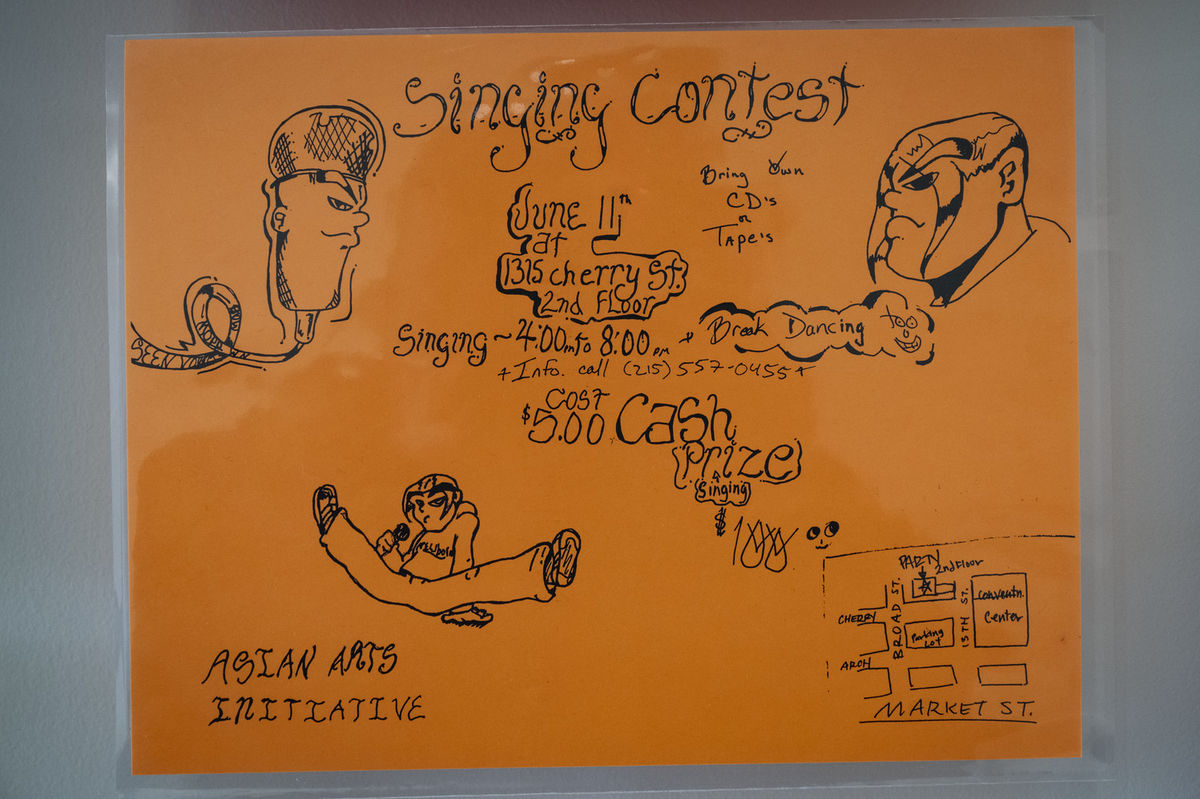 “The Asian Arts Initiative is a really cool arts organization in the city,” said Courtney Smerz, collection management archivist. “The records are great and full of stories and information about Chinatown and the larger Asian community in Philadelphia, going back to the early 1990s. I’m excited to make them available for researchers in the coming months.” (Photography by Joseph V. Labolito)
“The Asian Arts Initiative is a really cool arts organization in the city,” said Courtney Smerz, collection management archivist. “The records are great and full of stories and information about Chinatown and the larger Asian community in Philadelphia, going back to the early 1990s. I’m excited to make them available for researchers in the coming months.” (Photography by Joseph V. Labolito)
A contract for a musical performance by the first female cantor is featured as well as part of the Philadelphia Jewish Archives. “It’s exciting because we have a lot of music and culture material, so it helps tell the Philadelphia story,” said associate archivist Casey Babcock. “I wanted to put this [contract] in that discussion of arts and culture in Philadelphia.”
Ultimately, the exhibit offers an eclectic taste of SCRC collections.
“I’m interested in how people receive it,” said Sly. “We had so much fun doing it, and I hope other people have fun viewing and learning from it.”
To see and learn more, check out the What’s Great, New, Next? exhibit, which is open from 8 a.m. to 6 p.m. through May.
